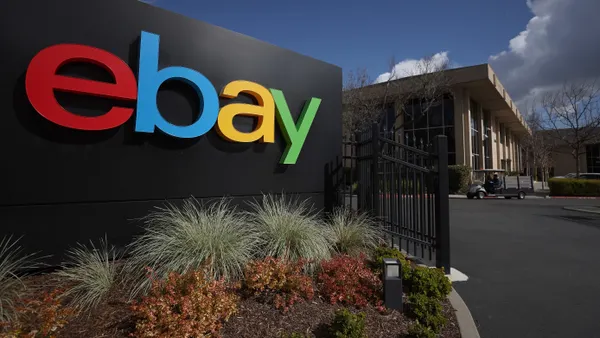Dive Brief:
- About 50% of consumers frequently use their mobile devices to shop, but only 20% complete the transactions on their phones, according to a new whitepaper from Braintree, a payments company owned by PayPal. A 100-millisecond delay in load time can decrease conversion rates by 7%.
- Globally, almost 77% of e-commerce shoppers abandon their carts. While many just change their minds, 27% cited a checkout process that takes too long or is too complicated, and 8% said they were dissatisfied with the number of payment methods.
- Consumer fraud and cybercrime prevention are an increasingly important priority for businesses. U.S. e-commerce companies lost an average of 1.47% of their revenues to fraud in 2016 despite increasing their spending on, and time commitment to, fraud mitigation, Braintree found.
Dive Insight:
Digital commerce has brought dramatic change. Retailers can pinpoint consumer preferences, engage across multiple channels, while expanding into new markets. The payment process is where it all comes together and where shoppers are most likely to walk away if the experience is not seamless. As a result, retailers must consider making payments a top priority.
Mobile devices are the key to understanding where payments are headed, and how they need to be fine-tuned. This is happening now as 58% of consumers use their phones to browse e-commerce apps or websites, and 38% do so at least once a week, according to Braintree. It is even more important for the future as 85% of younger consumers, especially those 25 to 34 years old, are more engaged with their phones while shopping, and 85% of them use their mobile devices to browse the Internet, reported Braintree.
The top complaints of mobile shoppers include slow load times, poor navigation, screens that are not optimized for mobile viewing and comparing items, limited options for making payments and requiring shoppers to fill in too many fields to complete a purchase, Braintree reported. While cart abandonment is an often-cited problem in e-commerce, it’s especially pervasive among mobile shoppers. The possible solutions for addressing cart abandonment — lower pricing, trimming extra fees like shipping costs, simplifying the checkout process — all focus on stemming abandonment before it happens.
New payment types, like mobile payment apps, may be one way for merchants to expand their reach while proactively managing fraud, Braintree found. Mobile payments leaders include Apple Pay, Starbucks, Google Pay, Samsung Pay, PayPal, Venmo, Android Pay, Visa Checkout and Masterpass. Starbucks leads the retail pack on mobile apps and will likely continue to do so at least until 2022, according to an eMarketer report. These mobile payment apps are a small part of the payment universe today, but rapid growth is expected.
There are some challenges that will need to be addressed to ensure a rosy future for mobile payment. A big jump in cybercrime and consumer fraud has resulted from the growth of digital commerce. The cost of fraud goes beyond the actual losses: consumer confidence also is taking a hit. It's an important area to get right: 42% of millennials in the U.S. said they limit mobile transactions because they are worried about security, according to Braintree.











